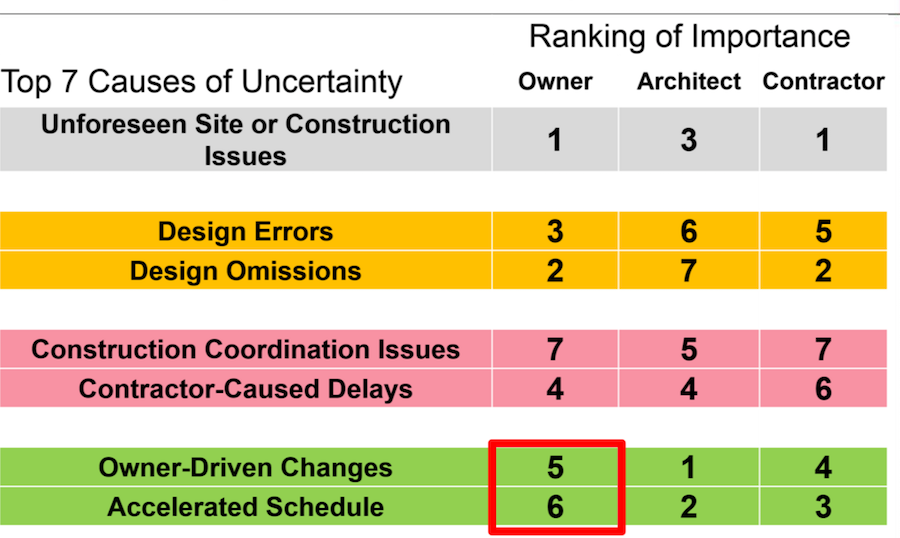Construction Risk Management
How Owners and Architects Differ on Risk Priorities
A new report shows the challenges created by perspective on errors, changes

A screen from Dodge Data & Analytics recent webinar on its new risk and uncertainty Smart Market Report. Courtesy Dodge Data & Analytics
Did you ever suspect that owners and architects aren't working from the same set of priorities?
Now there is some confirmation. One of the most important findings in the latest Smart Market Report from Dodge Data & Analytics is the difference in the way architects and owners rank project risks.
Based on survey questions answered by owners, architects, contractors and related companies, the report was the subject of a Feb. 16 webinar. It covers a wide range of issues related to risk and, while the report puts several issues in perspective, there were no big surprises in the key conclusions. Disputes and claims take a large toll on the construction industry. Contractors are concerned with shifting contractual risk, workforce issues and defaults. Collaboration helps. And being able to handle risk effectively can be a competitive advantage.
What was especially telling, if predictable, was the varying perspectives of different project players about which risks were most important.
For example, owners and contractors both believe design errors and omissions are an important source of risk, but the survey results show that “architects don’t believe they are very important,” reported Donna Laquidara-Carr, Dodge’s Smart Market report managing editor and a veteran construction-industry analyst. While owners ranked design errors and omissions in their top three causes of uncertainty, architects ranked them the sixth and seventh causes, respectively, she said.
And while owners ranked owner-driven changes and accelerated schedules only the fifth and sixth biggest causes, respectively, of project uncertainties, architects ranked them number one and number two, Laquidara-Carr reported.
These findings point toward one of the report's other key findings: Collaboration always helps minimize risk and uncertainty. "It's too easy in the current mind-set to assume that problems are the result of other team members,” noted Laquidara-Carr. In her webinar presentation, she emphasized that different project participants do not see the activities they have control over "as the most critical to risk. The point is that [these attitudes] are embedded in the culture, so there are some challenges.”
She added, "If we're going to reduce uncertainty and risk, every player has to consider how important they are in contributing to it."





